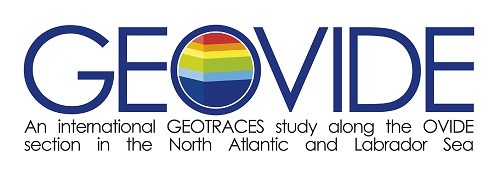Person in charge: P. Lherminier (LPO)
Participants: H. Mercier, V. Thierry, P. Branellec, F. Desprez, one ANR research associate, 1 PhD student and 1 engineer (LPO), A.F. Rios, F.F. Perez (CSIC-IIM, Vigo, Spain), G. Sarthou (LEMAR), F. Lacan (LEGOS), N. Tisnérat-Laborde (LSCE).
The main objective of this task is to clearly establish the various circulation features along the transect as well as to quantify the oceanic carbonic system and the changes of the anthropogenic carbon uptake in the North Atlantic. The physical oceanography strategy will be similar to that used in the OVIDE project: the physical core parameters will include temperature, salinity, and oxygen and will be complemented by large-scale observation arrays, provided by the ARGO programme and altimetry surface velocities. Expendable BathyThermographs (XBTs) will be deployed between stations with increasing resolution across frontal regions. This will enable the constitution of a physical background, so that water mass characteristics and transport are evaluated and calibrated via hydrology, Lowered and Ship Acoustic Doppler Current Profilers (LADCP and SADCP), and profiling float data. The extrapolation in time and space will be done via the altimetry and satellite surface temperature observations (satellite Tropical Rainfall Measuring Mission – TRIMM) (e.g. Legeais et al., 2005). The complete carbonic system will be studied and air-sea gas exchange, oceanic circulation and carbon cycling in the ocean will be additionally constrained by the measurement of 14C of the dissolved inorganic and organic carbon (DIC and DOC) and on the particulate organic carbon (POC). The outputs of this task will help providing comprehensive budgets of TEIs, thus contributing to the four other objectives of the project.
